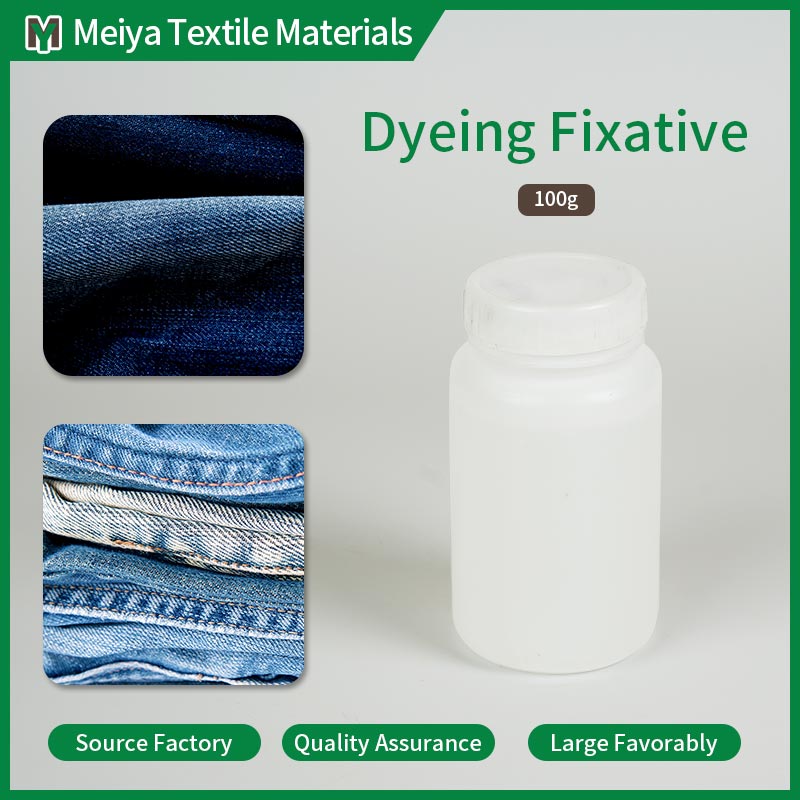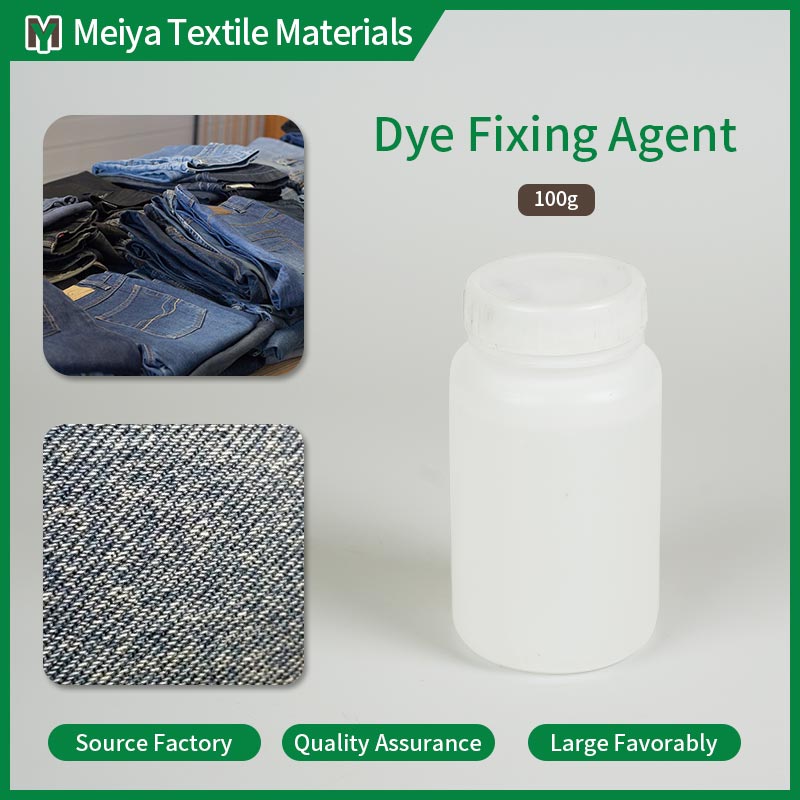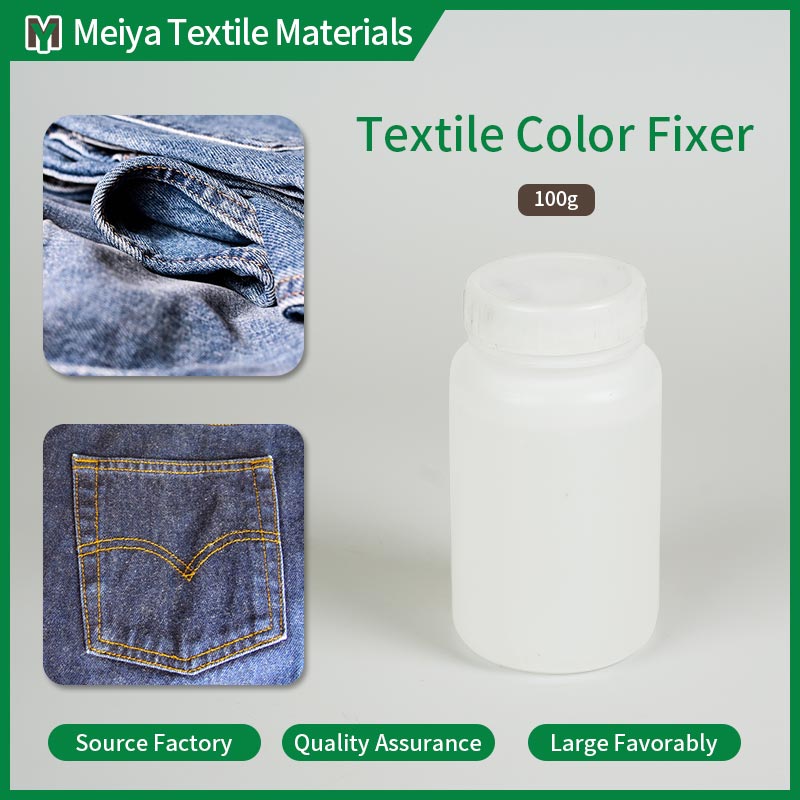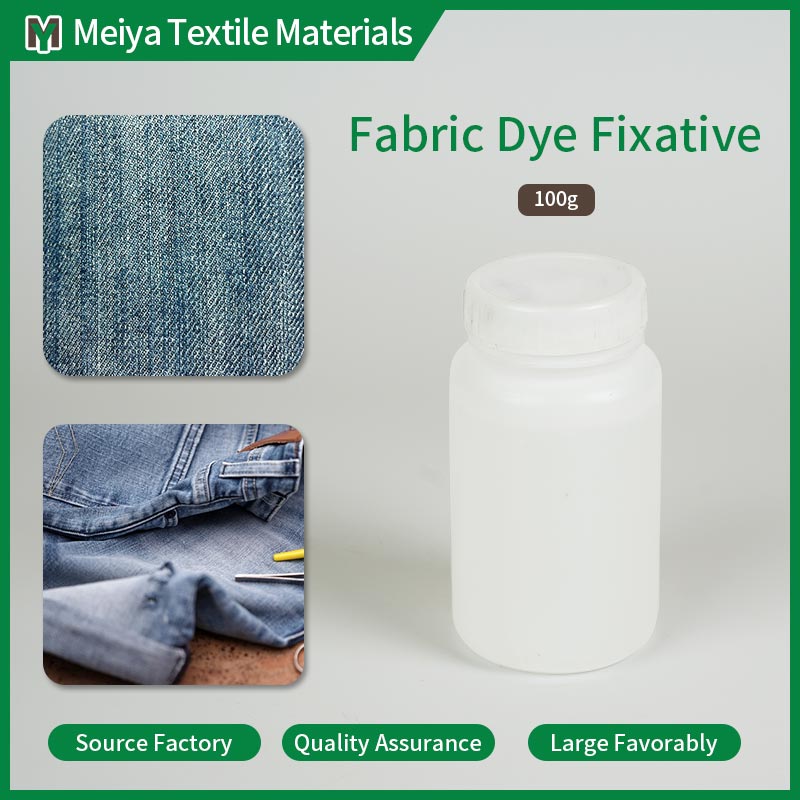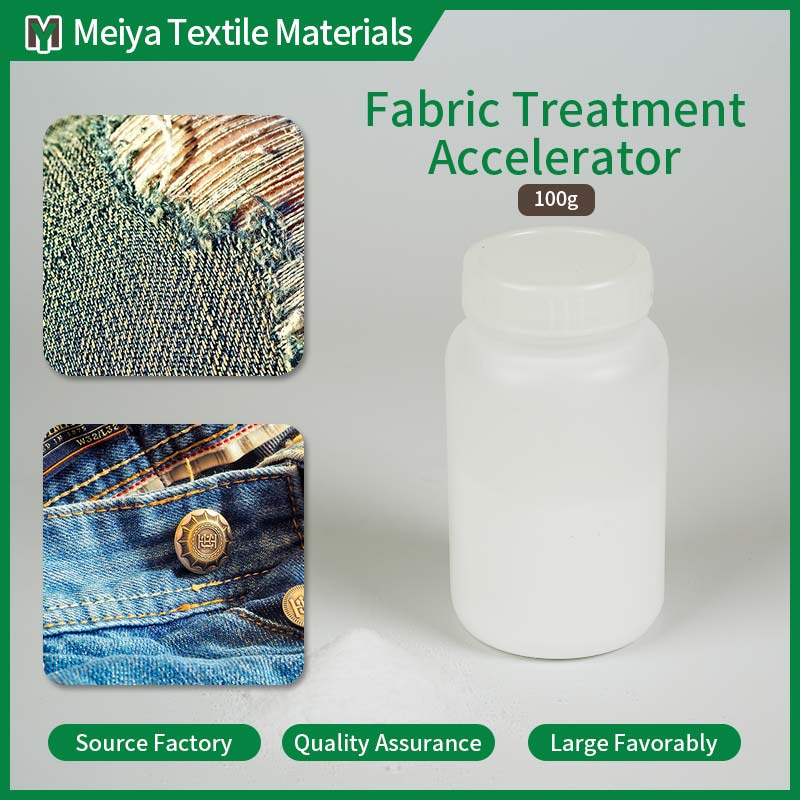Fabric Dyeing And Printing Auxiliaries
Please click the button below to contact us.
Introduction:Dyeing And Printing Auxiliaries are a series of chemicals used in the production, processing and treatment of textiles. This Dyeing And Printing Auxiliaries is a type of textile auxiliaries chemicals.
Product Description
Dyeing And Printing Auxiliaries are a series of chemicals used in the production, processing and treatment of textiles. This Dyeing And Printing Auxiliaries is a type of textile auxiliaries chemicals. Dyeing And Printing Auxiliaries can improve the performance, appearance and processing technology of textiles, covering all aspects from fiber production, spinning, weaving, printing and dyeing to finishing, and play a vital role in the textile industry, helping to improve the quality and production efficiency of textiles.
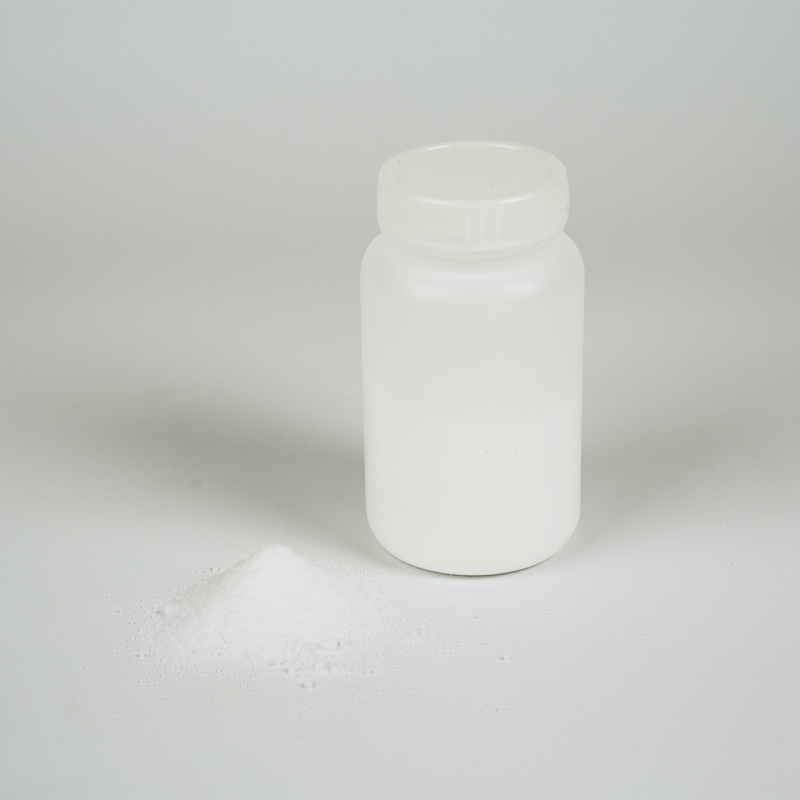
Dyeing And Printing Auxiliaries Features:
Efficient catalysis: Dyeing and Printing Auxiliaries have efficient catalytic function, which can significantly accelerate the chemical reaction speed in the process of fabric treatment. In a specific fabric treatment process, the reaction time can be shortened by 30% - 50% after using this accelerator. For example, in the color fixation treatment of fabric after dyeing, the color fixation time originally required 60 minutes. After adding an appropriate amount of accelerator, the color fixation time can be shortened to 30 - 42 minutes, while the color fixation effect is not affected, and the color fastness can still meet the relevant standard requirements (such as the color fastness grade specified in the ISO 105 series of standards), which greatly improves production efficiency.
Improve treatment effect: It can enhance the effect of fabric treatment and make the fabric have better performance. In the soft finishing of fabric, the softness of the fabric can be increased by 20% - 30% after using this accelerator. Measured by professional softness testing instruments, softness indicators (such as bending length, surface friction coefficient, etc.) are significantly improved. In addition, in terms of waterproof and oil-proof finishing, the accelerator can promote the combination of functional finishing agents and fabrics, so that the waterproof and oil-proof grades of the fabrics are increased by 1-2 levels (tested according to standards such as AATCC 22 and AATCC 118), and the functional performance of the fabrics is improved.
Good compatibility: The accelerator has good compatibility with a variety of textile dyes and auxiliaries. In complex dyeing and finishing systems, it will not react adversely with dyes and other auxiliaries, ensuring the stability and consistency of the entire treatment process. After a large number of laboratory tests and actual production verification, in dyeing systems containing multiple dyes such as reactive dyes, disperse dyes, direct dyes, and when used together with multiple auxiliaries such as softeners, color fixers, and waterproofing agents, precipitation, stratification, discoloration, etc. will not occur, ensuring the stability of fabric treatment quality.
Environmental protection and low pollution: It meets environmental protection requirements and has less harm to the environment and human body. Its chemical composition is biodegradable, and the degradation rate can reach more than 80% during wastewater treatment (tested within a certain period of time). At the same time, the accelerator does not contain harmful heavy metals (such as lead, mercury, cadmium, etc., the content is below the detection limit, tested in accordance with relevant environmental protection standards) and organic chlorine carriers and other harmful substances, reducing environmental pollution and potential threats to the health of operators, which is in line with the current trend of sustainable development in the textile industry.
Strong stability: The accelerator has good stability under different storage conditions and use environments. In a storage environment with a temperature of 5-40℃ and a relative humidity of 30%-80%, its chemical properties and performance remain basically unchanged within 12 months. After accelerated stability testing (simulating storage and use under harsh conditions such as high temperature and high humidity), the content of the active ingredient of the accelerator changes by less than 5%, ensuring the consistency of the product's use effect in different regions and seasons.
Precise and controllable dosage: The dosage of the accelerator can be precisely adjusted according to different fabric types and treatment processes. Generally speaking, adding 1-5 grams of accelerator per liter of treatment solution can achieve the desired effect. Through precise dosage control, it can not only ensure the treatment effect, but also avoid waste and unnecessary cost increase, and improve the economic efficiency of production.
Where can we use Dyeing And Printing Auxiliaries?
Textile printing and dyeing factories: In textile printing and dyeing factories, Dyeing And Printing Auxiliaries can be used in the dyeing and finishing processes of various fabrics. Taking the reactive dyeing of cotton fabrics as an example, the use of accelerators can shorten the dyeing time, improve the dye uptake and fixation rate of dyes, and reduce energy consumption and wastewater discharge. According to actual production data statistics, in large printing and dyeing factories, the use of this accelerator can shorten the dyeing time of cotton fabrics per 10,000 meters, and the dye utilization rate can be increased by 5% - 10%, which reduces production costs and improves production efficiency, meeting the needs of large-scale industrial production.
Garment finishing companies: Garment finishing companies use Dyeing And Printing Auxiliaries to perform functional finishing on finished garments, such as softening finishing, waterproof finishing, etc. In the finishing of jeans, the use of accelerators can make the softener better combined with denim and improve the wearing comfort of jeans. After finishing, the softness of jeans is significantly improved, and consumers report that they are more close-fitting and comfortable to wear. At the same time, the accelerator can also enhance the waterproof finishing effect, so that jeans have a certain waterproof performance, adapt to different wearing environments, and increase the added value of the product.
Home textile product production: In the field of home textile product production, Dyeing And Printing Auxiliaries can be used to treat products such as sheets, quilt covers, curtains, etc. For the antibacterial finishing of bedding, the accelerator can promote the combination of antibacterial agents and fabrics to improve the antibacterial effect. After professional testing, the home textile products treated with accelerators can achieve an antibacterial rate of more than 90% for common bacteria such as Escherichia coli and Staphylococcus aureus (tested in accordance with relevant antibacterial testing standards), effectively improving the hygienic performance of home textile products and meeting consumers' demand for healthy home products.
Industrial textile manufacturing: In the manufacturing of industrial textiles, such as tarpaulins, geotextiles, etc., Dyeing And Printing Auxiliaries can be used to enhance the functional performance of fabrics. For the waterproof and UV-proof finishing of tarpaulins, accelerators can speed up the reaction speed of the finishing agent and fabric and improve the finishing effect. After treatment, the tarpaulin can reach a waterproof level of 5 or above (according to relevant waterproof test standards), and the anti-ultraviolet performance can reach UPF 50+ (according to AATCC 183 and other standards), which can better meet the requirements of outdoor use and extend the service life of the product.
Wool textile industry: In the wool textile industry, Dyeing and Printing Auxiliaries can be used for shrinkage prevention and softening of wool fabrics. In the shrinkage prevention treatment of wool sweaters, the use of accelerators can make the shrinkage prevention agent better penetrate into the wool fiber and improve the shrinkage prevention effect. The shrinkage rate of the treated wool sweater can be controlled within 3% (according to relevant shrinkage test standards), which greatly improves the dimensional stability of the wool sweater, reduces the troubles of consumers during the washing process, and improves the quality and market competitiveness of the product.
Silk printing and dyeing processing: In silk printing and dyeing processing, Dyeing and Printing Auxiliaries helps to improve the dyeing brightness and color fastness of silk fabrics. Due to the particularity of silk fibers, the dyeing process has high requirements. After using accelerators, the dye can be more evenly distributed on the silk fibers, making the dyed silk color more vivid and bright. At the same time, the color fastness is significantly improved. In the color fastness tests such as washing resistance and rubbing resistance, the grade can be increased by 1 - 1.5 levels (tested according to ISO 105 series standards), which meets the high quality requirements of silk products and enhances the market value of silk products.
Dyeing And Printing Auxiliaries Maintenance:
Sealed storage: Dyeing And Printing Auxiliaries should be stored in a sealed container to avoid contact with air. During storage, ensure that the container is well sealed to prevent the accelerator from volatilizing and oxidizing. If the container is not tightly sealed, the active ingredients of the accelerator may be reduced due to volatilization, affecting the use effect. Generally speaking, the accelerator should be stored in the original container with the lid tightly closed in a cool, dry and ventilated place.
Avoid high temperature and direct sunlight: The storage environment should avoid high temperature and direct sunlight. High temperature and ultraviolet rays in sunlight may accelerate the chemical decomposition of the accelerator and reduce its performance. The ideal storage temperature is 5-40℃ and the relative humidity is 30%-80%. If the accelerator is exposed to high temperature for a long time (such as more than 50℃), the degradation rate of its active ingredients will be significantly accelerated, which may cause the accelerator to fail to achieve the expected effect when used.
Prevent impurities: During use and storage, prevent the accelerator from being mixed with impurities. Impurities may affect the chemical properties of the accelerator and the reaction effect with the fabric. When taking the accelerator, clean tools should be used to avoid bringing dust, fibers and other impurities into the container. If impurities are mixed into the accelerator, quality problems such as stains and color difference may occur during the fabric processing.
Regular inspection: Regularly check the storage conditions of the accelerator, including appearance, odor, etc. If the accelerator is found to have abnormal conditions such as discoloration, precipitation, odor, etc., it should be stopped and the supplier should be contacted for consultation and treatment. Regular inspections can timely discover possible problems that may occur during the storage of the accelerator and avoid the use of deteriorated accelerators to cause adverse effects on fabric processing.
Use according to the prescribed dosage: When using Dyeing And Printing Auxiliaries, strictly follow the prescribed dosage and usage methods. Excessive use may cause abnormal fabric processing effects, such as color difference, poor feel, etc.; insufficient dosage may not achieve the expected acceleration and enhancement effects. Before use, the product manual should be carefully read to understand the scope of application, dosage requirements and other information, and adjust according to actual production conditions.
Waste disposal: Expired or discarded Dyeing And Printing Auxiliaries should be properly disposed of in accordance with environmental protection requirements. Do not dump them at will to avoid environmental pollution. Discarded accelerators can be handed over to professional waste disposal agencies for disposal, or harmlessly disposed of in accordance with relevant environmental protection regulations to ensure that their impact on the environment and human body is minimized.
Dyeing And Printing Auxiliaries FAQs:
1. What do the Dyeing And Printing Auxiliaries do?
Dyeing And Printing Auxiliaries are specialized chemical that improves the effectiveness of various fabric treatments like dying and finishing.Treatments are absorbed and adhere better thus improving the color and durability of the fabric.
2. What is the role of the Dyeing And Printing Auxiliaries in my processes?
Various steps in the process such as dyeing, pre-washing or even finishing can be enhanced through the use of the Dyeing And Printing Auxiliaries. We advise them to perform trials in order to determine the most effective concentration and manner of carrying out their process and on which types of fabric.
3. Are there any anticipated dangers resulting from the use of the Dyeing And Printing Auxiliaries to the workers and the consumers?
Sure, our Dyeing And Printing Auxiliaries under the internationally accepted formulation guidelines. There is no formulation that contains harmful goods therefore these would be safe for workers during the manufacture and end users after usage of the products.
4. Is it possible to combine the Dyeing And Printing Auxiliaries with other chemical treatments?
Yes, our Dyeing And Printing Auxiliaries can be incorporated into systems that include other chemical treatments such as softeners and waterproofing agents. These combinations are quite compatible but they should be tried in order to ascertain performance.
5. In what way do the Dyeing And Printing Auxiliaries have further significance with regard to sustainability?
Our Dyeing And Printing Auxiliaries not only cuts the microns used in fabric treatments but also properly applies the surface treatment without wasting their effect, thus lowering the chemicals applied. This is in line with eco-friendly production owing to the fact that less chemicals will be required in the process.

